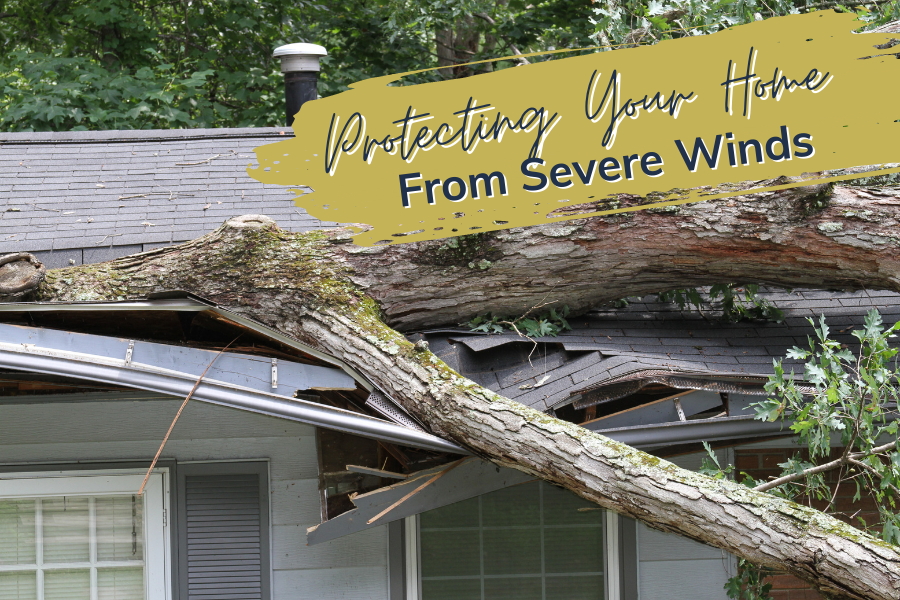Protecting Yourself From Damaging Winds In Fast-Moving Storms

Table of Contents
Understanding the Dangers of Fast-Moving Storms and Damaging Winds
Fast-moving storms, encompassing a range of severe weather phenomena, are notorious for their unpredictable and intensely destructive damaging winds. Understanding the risks associated with these storms is the first step toward effective protection.
Identifying High-Risk Areas
Certain geographical locations are inherently more vulnerable to the impact of fast-moving storms and their accompanying high winds. Identifying these high-risk areas allows for better preparedness and proactive safety measures.
- Coastal regions: These areas are particularly susceptible to hurricane-force winds and storm surges, which can exacerbate the destructive power of damaging winds.
- Mountainous areas: Complex terrain can funnel winds, creating localized areas of extremely high wind speeds, increasing the risk of damaging winds.
- Plains: Open plains offer little natural protection from strong winds, making them vulnerable to the full force of fast-moving storms and their associated damaging winds.
Regularly checking weather forecasts and storm warnings from reliable sources like the National Weather Service is vital for staying informed about potential threats.
Recognizing Warning Signs
Recognizing the warning signs of an approaching storm is crucial for timely action and minimizing risk. Stay alert for these indicators:
- Darkening skies: A sudden and dramatic darkening of the sky is a strong indication of an approaching storm.
- Sudden changes in wind direction: A shift in wind direction, often accompanied by an increase in wind speed, can signal the arrival of a fast-moving storm.
- Increased wind speed: A noticeable increase in wind speed, especially if it is accompanied by other warning signs, indicates the intensification of a storm.
- Approaching storm clouds: The visual appearance of dark, ominous storm clouds is a clear sign of an impending storm.
Heeding weather alerts and advisories is paramount to ensuring your safety and preparedness.
Types of Damaging Wind Events
Several types of high-wind events are associated with fast-moving storms, each posing unique challenges and varying degrees of risk:
- Tornadoes: These violently rotating columns of air are characterized by extremely high wind speeds and devastating destructive power.
- Derechos: These widespread, long-lived windstorms are characterized by straight-line winds that can cause extensive damage over a wide area.
- Hurricanes: These powerful tropical cyclones are accompanied by extremely high winds, torrential rain, and storm surges.
Understanding the characteristics of each type of event allows for better preparedness and response strategies. For detailed information on these weather phenomena, refer to authoritative sources such as the National Oceanic and Atmospheric Administration (NOAA).
Protecting Your Home and Property from Damaging Winds
Protecting your home and property from the destructive force of damaging winds requires proactive measures before, during, and after a storm.
Pre-Storm Preparations
Before a storm hits, taking proactive steps significantly reduces the risk of wind damage.
- Secure loose objects outside: Bring in any loose objects that could become airborne projectiles, such as lawn furniture, garbage cans, and outdoor decorations.
- Trim trees and shrubs: Trim trees and shrubs to prevent branches from breaking and causing damage to your home or property.
- Board up windows: Protect windows by boarding them up or applying storm shutters to minimize damage from high winds and flying debris.
- Reinforce garage doors: Garage doors are particularly vulnerable to wind damage. Consider reinforcing them with extra bracing or purchasing storm-resistant doors.
- Create a family emergency plan: Develop a comprehensive plan outlining evacuation routes, meeting points, and communication strategies.
During the Storm
During the storm itself, prioritize personal safety and minimize exposure to damaging winds.
- Stay indoors in a safe room: Seek shelter in a designated safe room, preferably an interior room on the lowest level of your home, such as a basement or interior closet.
- Avoid windows: Stay away from windows and exterior walls to avoid injury from shattered glass or falling debris.
- Unplug electronics: Unplug electronic devices to protect them from power surges.
- Monitor weather reports: Stay informed about the storm's progress by monitoring weather reports from reliable sources.
Post-Storm Safety
Once the storm has passed, exercise caution during the cleanup process.
- Assess damage cautiously: Carefully assess the damage to your property, being mindful of potential hazards such as downed power lines and structural instability.
- Avoid downed power lines: Never approach or touch downed power lines. Report them immediately to the appropriate authorities.
- Report damage to authorities: Report any significant damage to your home or property to your insurance company and local authorities.
- Take photos for insurance: Document the damage with photos or videos for insurance purposes.
Personal Safety During Damaging Winds
Personal safety is paramount during periods of high winds and severe weather. Proper preparation and informed decision-making are critical.
Emergency Preparedness Kit
Maintaining a well-stocked emergency preparedness kit is essential for ensuring your survival during and after a storm. Your kit should include:
- Water: A sufficient supply of potable water for several days.
- Non-perishable food: Food items that do not require refrigeration and can be stored for an extended period.
- First-aid kit: A comprehensive first-aid kit with essential supplies and medications.
- Flashlight: A reliable flashlight with extra batteries.
- Batteries: A supply of batteries for flashlights, radios, and other essential devices.
- Radio: A battery-powered radio for receiving weather updates and emergency broadcasts.
- Medications: Any necessary prescription medications. Regularly check and update your kit to ensure its contents are fresh and readily available.
Evacuation Procedures
Knowing when and how to evacuate is crucial in high-risk areas.
- Heed evacuation orders: Always comply with official evacuation orders issued by local authorities.
- Know designated routes: Familiarize yourself with designated evacuation routes and alternate routes in case of road closures.
- Have a designated meeting place: Establish a designated meeting place outside your home in case family members become separated during an evacuation.
Staying Informed
Reliable sources of weather information are crucial for making informed decisions and protecting yourself from damaging winds.
- National Weather Service: The National Weather Service (NWS) provides accurate and timely weather forecasts and warnings.
- Local news: Stay informed by watching local news channels and listening to weather reports on the radio.
- Weather apps: Utilize reliable weather apps on your smartphone to receive real-time alerts and forecasts.
- Sign up for weather alerts: Subscribe to weather alert systems to receive timely notifications about approaching storms and severe weather.
Conclusion
Fast-moving storms and their associated damaging winds pose a significant threat to life and property. By understanding the dangers, preparing your home and yourself, and staying informed, you can significantly reduce your risk. Remember the key takeaways: prepare your home by securing loose objects and reinforcing vulnerable areas; create a family emergency plan and gather essential supplies; and always heed evacuation orders and monitor weather reports for updates. Take proactive steps to prepare for damaging winds, mitigate damaging wind effects, and stay safe from damaging winds by visiting the National Weather Service website ([link to NWS website]) for more detailed information and resources. Don't wait until it's too late – take action today to protect yourself and your loved ones from the destructive power of damaging winds.

Featured Posts
-
 Man Utd Amorims Blockbuster Forward Signing Pays Off
May 20, 2025
Man Utd Amorims Blockbuster Forward Signing Pays Off
May 20, 2025 -
 Michael Strahans Interview Strategy Navigating The Intense Ratings Competition
May 20, 2025
Michael Strahans Interview Strategy Navigating The Intense Ratings Competition
May 20, 2025 -
 Tourism Plummets After Japanese Mangas Disaster Prediction
May 20, 2025
Tourism Plummets After Japanese Mangas Disaster Prediction
May 20, 2025 -
 Delving Into The World Of Agatha Christies Poirot
May 20, 2025
Delving Into The World Of Agatha Christies Poirot
May 20, 2025 -
 Tyler Bate Back On Wwe Raw What To Expect
May 20, 2025
Tyler Bate Back On Wwe Raw What To Expect
May 20, 2025
